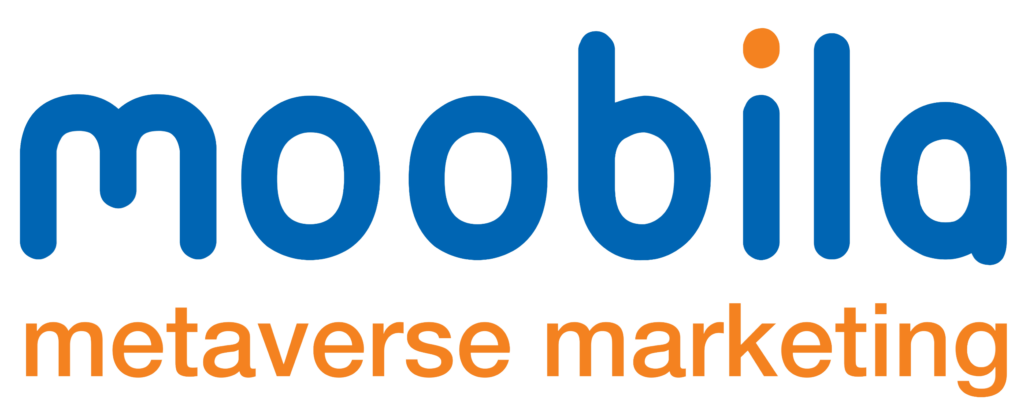Table of Content
- Step 1: Define Your Target Audiences and Buyer Personas
- Step 2: Gather Brand Assets and Collateral from All Touchpoints
- Step 3: Analyze Brand Identity Gaps
- Step 4: Examine Brand Messaging and Tone Using 4 C’s
- Step 5: Audit Visual Brand Assets
- Step 6: Evaluate Overall Brand Experience
- Step 7: Identify Strengths, Weaknesses, Opportunities, and Threats
- Step 8: Define Your Brand Architecture
- Step 9: Develop an Action Plan for Optimization
This is where conducting a rigorous brand audit comes in—an invaluable exercise for taking a deep dive into your current branding and unveiling what’s working, what needs rethinking, and where new opportunities lie.
Consider it an annual comprehensive health checkup for your brand’s positioning.
By auditing across seven key areas, you gain unfiltered clarity on the following:
- How well your brand resonates with target audiences
- Misalignments between brand identity and external perceptions
- Your most powerful brand assets and differentiators
- Glaring weaknesses, blindspots, and inconsistencies
- New growth possibilities to pursue
Here is a step-by-step guide to diagnosing problems, celebrating strengths, and identifying solutions to evolve your brand.
How to Conduct an In-depth Brand Audit in 9 Steps
Step 1: Define Your Target Audiences and Buyer Personas
The first critical phase of your brand audit is getting crystal clear on who your ideal target customers and clients are.
You need to specify granular demographics such as:
- Age ranges and life stages – Is your brand targeting mainly millennials, Gen Xers, baby boomers, families, or retirees? Identify the key age brackets, life stages, and generational segments you aim to resonate with.
- Geographic locations – Pinpoint the geographic areas your brand caters to, whether countries, regions, cities, or neighborhoods. Also, consider rural vs. urban and other dimensions.
- Gender – Do you primarily serve male or female audiences? Or have a strong value proposition for non-binary groups? Get clear on gender appeal.
- Income levels and budgets – Map out the household income ranges, budgets, and spending power of your audience. This impacts messaging and pricing decisions.
- Core values and interests – What values like family, achievement, altruism, and interests like sports, travel, gaming, etc., connect with your brand? Lean into shared ideals.
- Motivations for buying your product/service – Why does your offering appeal to customers? How does it fulfill emotional and functional needs? Understanding motivations help craft messaging that resonates.
- Pain points your brand solves – What frustrations, challenges, and needs does your brand alleviate for customers? Focus on positioning around relieving these pains.
In addition to demographics, create detailed buyer personas – semi-fictional representations of your most common customer groups like “tech-savvy millennials” or “suburban soccer mom.” These will serve as framing filters for evaluating how your current brand resonates with these core segments.

Step 2: Gather Brand Assets and Collateral from All Touchpoints
Conduct an inventory of all current branding elements and materials across every customer touchpoint:
- Logos, brand guidelines, and graphical assets
- Website and blog content
- Product packaging, labels, and instructions
- Printed marketing collateral like brochures, flyers, etc
- Digital assets like presentations, ads, and social media graphics
- Internal documents like emails, letterheads, forms, etc
- Photography, image libraries, and illustrations
- Videos, commercials, and other multimedia
Gathering everything in one place lets you audit messaging, visuals, tone, and consistency across the board.
Step 3: Analyze Brand Identity Gaps
Start with an honest self-assessment of how you aim to be perceived by customers and what your brand promises. Then compare it against external audience perceptions through:Customer feedback like testimonials or reviews
- Analyze direct customer opinions like reviews, testimonials, and conversations for common themes in their brand impressions. Look at rating sites like Yelp too. What feelings and experiences are highlighted?
- Market research on current brand perceptions
Commission surveys and market research studies to get unfiltered feedback on brand awareness, associations, trust, consideration, and other perceptions from customers. - Social listening for the sentiment on social platforms
Use social listening tools to identify what potential & current customers are saying about your brand across social media platforms. Look at their emotions, misconceptions, complaints, etc. - Surveys and focus groups on brand awareness and associations
Directly ask people through polls, surveys, and focus groups about their impressions of your brand philosophy, personality, differentiation, strengths vs. competitors, and other associations. - Competitor messaging and positioning
Research how competitors talk about themselves and map out your differentiation. Look for overlaps or gaps from your own messaging.
Look for the biggest gaps between your brand identity aspirations and promises versus the actual audience experiences and perceptions surfaced through feedback.
This identifies areas where your brand is failing to connect with customers’ needs or misaligning with the positioning you intend to own. Prioritize closing these perception gaps.
Step 4: Examine Brand Messaging and Tone Using 4 C’s
Carefully analyze all brand messaging across channels and materials on criteria like:
- Clarity – Is our messaging concise, focused, and easy to digest?
- Consistency – Do we convey cohesive messaging in terms of tone, voice, and values everywhere?
- Connection – Does our messaging elicit an emotional response from target audiences?
- Compelling – Does it highlight our differentiation, credibility, benefits, and reason to believe?
Any messaging that is vague, off-tone, conflicting, or fails to connect should be reworked or discarded.

Step 5: Audit Visual Brand Assets
Review all visual components using criteria such as:
Thoroughly review all visual components of your brand using criteria such as:
- Color palette – Do our primary and secondary colors align with and reinforce the desired brand personality we want to convey? E.g., bold reds reflect excitement.
- Typography – Do our selected fonts and font styles match our desired tone and style? Is the typography used consistent across all materials and channels?
- Photography – Do the models, expressions, backgrounds, and image style choices in our photography resonate with our target audiences?
- Illustrations – Do our illustrations feel cohesive and on-brand? Do illustration styles match our aesthetic?
- Logos – How are our logo lockups, wordmarks, icons, and elements utilized across various touch points like website, packaging, signage, etc?
As you audit your visuals, look for specific opportunities to refine the aesthetics to boost appeal, differentiation, and consistency for your audiences.
Look for opportunities to refine visuals to boost aesthetic appeal, differentiation, and consistency.
Step 6: Evaluate Overall Brand Experience
Zoom out from individual tactics to assess how your brand comes together across the entire end-to-end customer journey. Evaluate with metrics like:
- Trust – Does our brand establish credibility and instill confidence in customers at every touchpoint interaction? Do we deliver on promises?
- Cohesion – Is the brand experience consistent, aligned, and reinforced across channels? Or disjointed?
- Emotion – What emotions does our brand make customers feel throughout their journey with us? How do we make them feel at key moments like onboarding or purchases?
- Service – Does our brand deliver care, convenience, expertise, and solutions when and where customers need it?
- Loyalty – Does each branded interaction deepen relationships and affinity with our customers? Or is engagement flat?
While the customer experience encompasses many elements beyond branding, brand identity and essence are interwoven throughout the entire journey.
Step 7: Identify Strengths, Weaknesses, Opportunities, and Threats
Compile your audit findings into a strategic SWOT analysis framework:
Strengths
What existing brand assets are working well and should be doubled down on?
- Core differentiators, you own in the market
- Hero products or services
- Values you authentically convey
- Visual identity and Aesthetics
- Key messaging that resonates
Weaknesses
What branding elements need to be improved or eliminated?
- Confusing or inconsistent messaging
- Poor visual identity cohesion
- Lack of differentiation from competitors
- Website or campaigns not performing
Opportunities
Which possibilities exist based on consumer insights and trends?
- Growing demand from new demographics
- Adjacent products or services our brand could expand into
- New technologies to integrate and showcase our branding
- Cultural shifts we can connect to
Threats
Which competitors, environmental factors, or trends pose a risk?
- Competitors with stronger brand awareness
- Commoditization risk for our products
- Changing consumer perceptions or values
- The economic landscape and external risks
Conducting a SWOT analysis provides strategic direction for realigning and strengthening branding and positioning in light of key findings.
Step 8: Define Your Brand Architecture
Audit your brand portfolio and structure—are relationships and hierarchies between sub-brands, product lines, and assets well-defined and consistent? If portfolio complexity has grown, gain clarity:
- Parent brand – Overarching master brand
- Sub-brands – Brand extensions and product lines
- Endorsed brands – External partnerships and co-branding
- Supporting brands – Internal products or programs
The well-defined architecture ensures every element ladders up to your core identity.
Step 9: Develop an Action Plan for Optimization
Translate your audit into a concrete, measurable action plan outlining the next steps:
- Refining messaging and narratives for better resonance
- Producing visual assets like photography to fill identified gaps
- Improving brand alignment and SEO across digital properties
- Updating brand guidelines and retraining employees
- Refreshing websites, communications, product packaging, etc.
- Addressing brand architecture complexities
- Adding new differentiating brand elements
Get stakeholder buy-in, assign owners, and set timeframes to execute identified initiatives.
In today’s crowded marketplace, regularly checking your brand’s pulse is essential. Conduct audits annually or quarterly to assess resonance, get strategic, and fuel meaningful evolution. A healthy brand directly fuels healthy business growth!
Want an objective checkup of your brand’s health, from diagnosis to prescription?
Moobila offers end-to-end branding services to uncover your true differentiation, craft strategic messaging that resonates, create visual identities that captivate, and map your brand experience to drive loyalty.
Our team brings an outsider’s perspective to your brand audit, assessing strengths and weaknesses without bias. We identify gaps holding your brand back as well as undiscovered opportunities for growth.
From brand strategy to visual design to customer experience, we can optimize your branding for today’s market.
Ready to get an unfiltered analysis of what’s working, what’s not, and where your brand should head next?
Let’s get started on a brand audit
Written by: Rabeea,
Senior Content Lead Moobila
Senior Content Lead Moobila
Share this:

Moobila
Our passion is to build aspiring brands, with the with advanced technologies, creative strategies, inspiring content and personalized customer support. Our team of seasoned experts combine technical expertise with a flair to create digital campaigns that captivate audiences and drive tangible results.
Partner with us
Unlock your business potential with our committed team driving your success.
Recent Posts
Apple’s iPhone 17 Pro Max: A Closer Look at the Rumored Radical Redesign
April 20, 2025
No Comments
Read More » 

